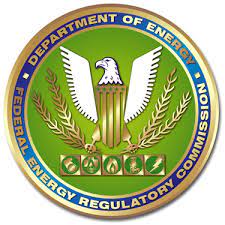The Federal Energy Regulatory Commission (FERC) issued two policy statements, providing guidance for future consideration of natural gas projects. In addition to providing an analytical framework for when environmental and public interest issues arise when companies seek to build new natural gas facilities, the certificate policy statement and interim greenhouse gas (GHG) policy statement are intended to improve the legal durability of FERC’s natural gas certificate and liquefied natural gas (LNG) decisions following a series of court decisions raising concerns about its prior approach.
The updates to the certificate policy statement include the first revision in more than 20 years to FERC’s policy for the certification of new interstate natural gas projects under Section 7 of the Natural Gas Act (NGA). With the interim GHG Policy statement, FERC is taking a critical step in clarifying how it will address GHG emissions under the NGA and National Environmental Policy Act (NEPA) for proposed pipeline and LNG projects. FERC is seeking comment on the Interim GHG Policy Statement.
“I believe today’s long overdue policy statements are essential to ensuring FERC’s natural gas siting decisions are reflective of all stakeholder concerns and interests,” said Chair Rich Glick. “We have witnessed the impact on pipeline projects when federal agencies, including FERC, fail to fulfill their statutory responsibilities assessing the potential effects of a project on the environment, landowners, and communities. If we are going to ensure legal durability of our orders, it is essential that FERC satisfy its statutory obligations the first time. I’m proud of these policy statements because they provide a forward-looking declaration on how FERC intends to execute its authority to consider proposed infrastructure projects in a manner that is responsive both to all the interests at stake and to the direction of the courts.”
Updated Certificate Policy Statement (PL18-1)
In 2018 and again in 2021, FERC issued notices of inquiry (NOI) seeking public comment on its 1999 policy statement on the certification of new interstate natural gas transportation facilities. In particular, FERC requested information on the consideration of the effects of such projects on affected communities, the treatment of precedent agreements in determining the need for a project, and the scope of FERC’s environmental review, including an analysis of the impact of a project’s GHG emissions.
The Updated Certificate Policy Statement reaffirms many of the goals and objectives of FERC’s 1999 policy statement, but further clarifies how it will execute its public interest obligations under the NGA. The Updated Policy Statement explains that, in making such determinations, FERC intends to consider all impacts of a proposed project, including economic and environmental impacts, together. It also calls for a robust consideration of impacts to landowners and environmental justice communities in its decision-making process.
And where FERC has traditionally relied on precedent agreements between project applicants and shippers to establish the need for a project, the Updated Certificate Policy Statement states that applicants should provide more than just precedent agreements to help explain why a project is needed, such as the intended end use of the gas. It also states that FERC may consider other evidence of need, including demand projections, estimated capacity utilization rates, potential cost savings to customers, regional assessments, and statements from state regulators or local utilities.
Interim GHG Policy Statement (PL21-3)
FERC is issuing the Interim GHG Policy Statement to explain how it will assess the impacts of natural gas infrastructure projects on climate change in its reviews under the National Environmental Policy Act and the NGA. FERC seeks comment on all aspects of the interim policy statement, including, in particular, the approach to assessing the significance of the proposed project’s contribution to climate change. The guidance is subject to revision based on the record developed in this proceeding; however, FERC will begin applying the framework established in this policy statement in the interim. This will allow it to evaluate and act on pending applications under Section 3 and Section 7 of the NGA without undue delay and with an eye toward greater certainty and predictability for all stakeholders.
The interim policy sets a threshold of 110,231 tons (100,000 tonnes) per year of GHG emissions. Projects under consideration with emissions above that level will require the preparation of Environmental Impact Statements (EIS). FERC will consider proposals by project sponsors to mitigate all or part of their projects’ climate change impacts. FERC may condition its approval on further mitigation of those impacts.
In quantifying GHG emissions, FERC will consider emissions that are reasonably foreseeable and have a reasonably close causal relationship to the proposed action. This will include GHG emissions from construction and operation of the project and may include GHG emissions resulting from the upstream production and downstream combustion of transported gas.
Applicability
As policy statements, neither document establishes binding rules. They are intended to explain how FERC will consider applications for natural gas project construction. They will apply only to pending and new projects; those applicants with projects now pending will have the opportunity to supplement their records.
















